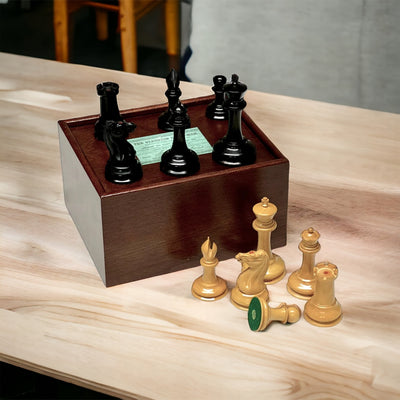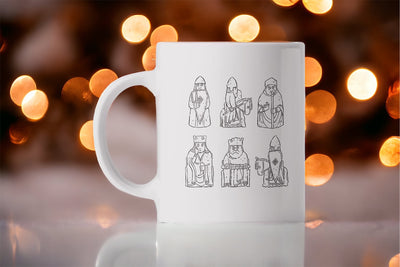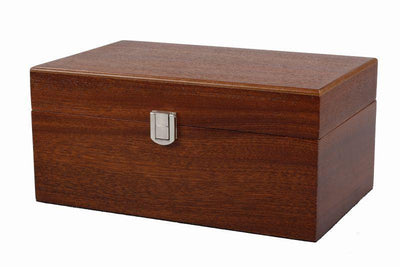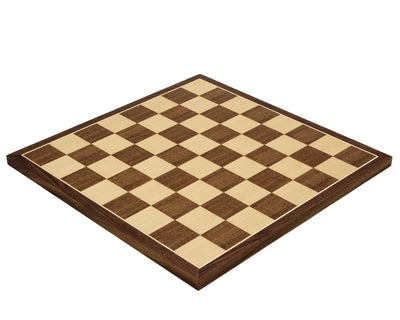Crafting Chess Boards: A Timeless Art
Chess, often referred to as the "Game of Kings," is a timeless strategy game that has captivated the hearts and minds of people worldwide for centuries. One of the key elements that adds to the allure of this game is the chessboard itself. Crafting a chessboard is an art form that combines precision and creativity, resulting in a functional piece of art. In this blog, we will delve into the world of crafting chessboards, exploring the history, materials, techniques, and the steps involved in creating these exquisite boards.
Chessboard History: The history of chessboards is as rich as the game of chess itself. Chess originated in India during the Gupta Empire, around the 6th century AD. The game gradually spread across Persia, the Arab world, and eventually reached Europe in the 9th century. Early chessboards were made from various materials, including stone, wood, and even fabric. These boards were often highly ornate and reflected the craftsmanship of the era.
Materials Used: Today, chessboards are crafted from a variety of materials, each offering a unique aesthetic and feel. Some of the most common materials include:
-
Wood: Wood is a classic choice for crafting chessboards. It offers a warm and natural look, with popular woods including walnut, maple, and rosewood. The contrasting colours of the wooden pieces against the board create an appealing visual contrast.
-
Stone: Stone chessboards are often made from marble or onyx. They exude a sense of luxury and are favoured for their durability and timeless appeal.
-
Metal: Metal chessboards, often crafted from materials like brass or pewter, can be intricate and detailed. They are a favourite among collectors due to their unique and eye-catching designs.
-
Glass: Glass chessboards are a modern and minimalist choice. They provide a sleek and contemporary look, with chess pieces seemingly floating on the transparent surface.
Crafting Techniques: Crafting a chessboard is a meticulous process that requires a combination of woodworking, design, and attention to detail. Here are the key techniques involved:
-
Woodworking: If crafting a wooden chessboard, it begins with selecting high-quality wood, cutting it into squares, and then gluing and clamping the squares together to create the checkerboard pattern.
-
Inlay and Marquetry: Inlay involves embedding materials like stone or metal into the wooden surface to create intricate patterns. Marquetry involves using different types of wood to create decorative designs on the board's surface.
-
Finish and Polishing: After the chessboard is constructed, it undergoes finishing processes such as sanding and polishing to achieve a smooth and lustrous surface. Varnishes and lacquers may be applied to enhance the appearance and protect the wood.
Steps to Craft a Chessboard: Creating a chessboard is a rewarding endeavour. Here's a simplified step-by-step guide:
-
Material Selection: Choose the material you wish to work with, considering factors like appearance, durability, and cost.
-
Design: Plan the pattern and design of your chessboard. This may involve deciding on square size, colour combinations, and any inlay or marquetry details.
-
Cutting and Gluing: Cut the material into squares and arrange them to form the chessboard pattern. Glue and clamp them together.
-
Sanding: Sand the surface to ensure it is smooth and free of imperfections.
-
Finish: Apply a suitable finish or stain to enhance the appearance and protect the board.
-
Chess Piece Compatibility: Ensure that the board's squares are appropriately sized for your chess pieces.
Crafting a chess set is hard work, combining tradition and innovation. Whether you choose to work with wood, stone, metal, or glass, the process requires skill and precision. A well-crafted chessboard not only enhances your chess-playing experience but also serves as a beautiful piece of art, worthy of display and admiration. As you embark on your own chessboard crafting journey, remember that each board tells a unique story and reflects the dedication of its maker.
Acacia wood is a popular choice for crafting chessboards, and for good reason. Known for its exceptional durability, distinct grain patterns, and beautiful coloring, acacia wood chessboards provide a classic and timeless playing surface for chess enthusiasts. Let's delve into some key characteristics and advantages of acacia wood chess boards:
-
Natural Beauty: Acacia wood is celebrated for its unique aesthetic appeal. Its rich, warm colors, which range from light golden to deep reddish-brown, create a visually striking backdrop for the chess pieces. The grain patterns in acacia wood are often distinctive, with interwoven lines and knots that add to the board's overall beauty.
-
Durability: Acacia wood is highly regarded for its strength and longevity. It is resistant to wear and tear, making it an excellent choice for a chessboard that will endure years of play. The hardness and resilience of acacia wood ensure that your chessboard will remain in great condition, even with regular use.
-
Stability: Acacia wood is known for its stability and resistance to warping or cracking. This ensures that the chessboard's surface remains flat and even, providing a stable platform for your games. Its robust nature makes it suitable for both casual and competitive play.
-
Customization: Craftsmen often choose acacia wood for its versatility. This wood can be intricately carved, inlaid, or combined with other materials to create unique designs and patterns on the chessboard's surface. Whether you prefer a minimalist design or a more elaborate and decorative style, acacia wood can be crafted to meet your preferences.
-
Sustainability: Acacia wood is sourced from acacia trees, which are known for their fast growth. This makes it a relatively sustainable choice when harvested responsibly. Many manufacturers ensure they use acacia wood from well-managed and sustainable sources, which is important for those concerned about the environmental impact of their purchases.
-
Maintenance: Acacia wood chess boards are relatively low-maintenance. Regular cleaning and occasional waxing or oiling to maintain the wood's natural luster are typically all that is required to keep your board looking its best.
-
Weight and Portability: Acacia wood chess boards can be relatively heavy, especially in larger sizes. While this weight adds to the board's stability, it may not be the most portable option for some individuals. However, the weight can also be seen as an advantage, as it prevents the board from shifting during intense matches.
-
Affordability: Acacia wood chess boards are often more affordable than some rarer or exotic woods, making them an attractive choice for those looking for a combination of quality and reasonable pricing.
In conclusion, acacia wood chess boards are a fantastic choice for chess enthusiasts who appreciate a blend of natural beauty, durability, and customization options. Whether you're a casual player or a serious chess aficionado, an acacia wood chess board can enhance your playing experience with its timeless appeal and robust nature. It's a classic choice that will serve you well for years to come.
Chessboards, particularly hand-crafted ones, deserve a special place in our hearts and homes. The amount of time, skill, and dedication invested in creating these exquisite boards is truly remarkable. It's a testament to the artistry and craftsmanship of individuals who take this ancient game and elevate it into a work of art. At www.chessmaze.co.uk, you'll find a treasure trove of handcrafted chessboards that exemplify this dedication. These unique pieces are not just game boards; they are a symbol of tradition, a showcase of artistic prowess, and a celebration of the enduring legacy of chess. Each board available on www.chessmaze.co.uk represents a labour of love, deserving of admiration and recognition in the world of chess enthusiasts and collectors alike.








